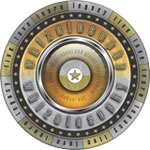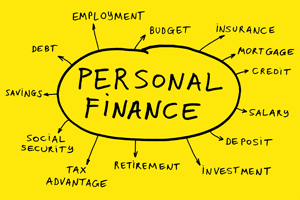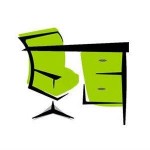- Abuse & The Abuser
- Achievement
- Activity, Fitness & Sport
- Aging & Maturity
- Altruism & Kindness
- Atrocities, Racism & Inequality
- Challenges & Pitfalls
- Choices & Decisions
- Communication Skills
- Crime & Punishment
- Dangerous Situations
- Dealing with Addictions
- Debatable Issues & Moral Questions
- Determination & Achievement
- Diet & Nutrition
- Employment & Career
- Ethical dilemmas
- Experience & Adventure
- Faith, Something to Believe in
- Fears & Phobias
- Friends & Acquaintances
- Habits. Good & Bad
- Honour & Respect
- Human Nature
- Image & Uniqueness
- Immediate Family Relations
- Influence & Negotiation
- Interdependence & Independence
- Life's Big Questions
- Love, Dating & Marriage
- Manners & Etiquette
- Money & Finances
- Moods & Emotions
- Other Beneficial Approaches
- Other Relationships
- Overall health
- Passions & Strengths
- Peace & Forgiveness
- Personal Change
- Personal Development
- Politics & Governance
- Positive & Negative Attitudes
- Rights & Freedom
- Self Harm & Self Sabotage
- Sexual Preferences
- Sexual Relations
- Sins
- Thanks & Gratitude
- The Legacy We Leave
- The Search for Happiness
- Time. Past, present & Future
- Today's World, Projecting Tomorrow
- Truth & Character
- Unattractive Qualities
- Wisdom & Knowledge
Career & Finance Fridays
The 4 Pillars of Personal Finance
The world of finance is a big one. Between personal, professional, small businesses and large ones, billionaires and bankruptcy, navigating it looks different for everyone. When it comes to personal finance -- arguably the most important for the average individual to understand - there are 4 crucial pillars that split things up well and effectively.
First -- assets. These are the building blocks of your financial position. The big things you own or direct. Homes, cars, businesses, etc. Even smaller things like jewelery, insurance policies, retirement accounts and everything in your savings. Your assets assemble your net worth and are tangible evidence of wealth.
Secondly, debts. Debts take a negative impact on your net worth. Mortgage payments, car loans, and student debt all affect your current and future finances. To figure out how much you're worth, you need to subtract the total amounts of these from your assets value.
Income. How much are you bringing in every month? Through your day job, side hustle, or any passive sources, understanding the crucial role that monthly income plays is key. This is the foundation of everything else. Your monthly income right now will determine the state of your assets and debt in the future.
Finally, expenses. In the same way that debt subtracts from assets, expenses come out of your income. These are your bills, utilities, payments and services that are consistently withdrawn. These expenses are regular, and they're an important part of your life and financial profile. They make up your needs, wants, and fun activities.
These pillars of personal finance are foundational to your understanding of where you're at and where you're going. If you want to have a clearer picture, sit down and give yourself a full assessment using these pillars. Establish your net worth, income, expenses, and any upcoming changes to them. Once you have a good baseline, you'll be able to set goals, targets, and work towards wherever it is that you want to go.
Interesting Fact #1
Average consumers spend over $60,000 each in a year.
Interesting Fact #2
Students currently have a record high debt of $1.5 trillion.
Interesting Fact #3
Limiting your time on social media can actually help you save money.
Quote of the day
Beware of little expenses; a small leak will sink a great ship.
Article of the day - Understanding the Four Pillars of Personal Finance
The first of the year is a great time to take a personal financial inventory especially when you may be recovering from overspending at Christmas. Maybe you’ve made a resolution to make and really live by, a monthly budget. In any case, it’s never a bad time to get your financial house in order.
There are many different financial profiles and household budgets vary widely. Budgets also fluctuate, morphing continually, due to unexpected changes — positive or negative — and disruptions. So how can you really determine the health of your financial profile?
Regardless of income or wealth, number of investments, or amount of credit card debt, everyone’s financial state fits into a common, fundamental framework, that we call the Four Pillars of Personal Finance. Everyone has four basic components in their financial structure: assets, debts, income, and expenses. Measuring and comparing these can help you determine the state of your finances and your current net worth. You can think of them as the vital signs of your financial circumstances. When they are all in balance and working for you, your vitals are strong. When things get off-kilter, like your liabilities being off the charts, your finances may need some CPR to set them right.
How to Take Your Personal Financial Inventory
Assets and Liabilities
Assets and Liabilities are the fundamental elements of your financial position. The difference between the two represents your net worth. For example, with some very simple math, we might say that you own a home worth $200,000 and a car worth $10,000. You owe $60,000 on the home and $5,000 on the car. Your $210,000 assets minus your $65,000 liabilities gives you a net worth of $145,000.
To get started understanding your overall personal financial health, tally up your assets and your liabilities:
Understanding Your Assets
What is Considered an Asset?
Assets are items that you own and that have value that can be turned into cash when needed. Assets include cash in your personal checking or savings account, whole life insurance policies, 401k’s, investments, land, equity in your home, valuable jewelry, even Great Aunt Sally’s beautiful antique fine china. But it’s probably best not to count on your baseball card collection or your Precious Moments figurines. The key to an asset is its ability to be converted to liquid cash within a short period of time. Your vinyl collection may be the envy of all your friends, but if you cannot convert it to liquid cash when you need it, then it cannot be considered an asset.
If you are a homeowner, your house is likely your most valuable asset. However, its value is offset by a mortgage, if you have one. And a mortgage is a liability. The difference between the house asset and the mortgage is your equity. It can increase over time if the property value increases or you pay down the loan balance. Your home equity is your asset. For example, if you owe $120,000 on a home loan and your home is valued at $200,000, then you have $80,000 worth of equity, or an $80,000 asset.
Why are Assets Important?
That asset can be used later in life, so it’s important to understand how it works and how to use it wisely. We can help you make informed decisions about leveraging your home’s equity. In short, using your equity for things that will produce a positive long-range return, like improvements that increase your home’s value or paying off high interest credit cards, or for covering emergency expenses are good reasons to access your home equity. It is a bad idea to liquidate your equity for luxury purchases, vacations, and daily living expenses.
Is My Car an Asset?
Quite possibly. Cars are tricky in that they are depreciating assets — they begin losing value significantly the moment you drive them off the lot, and they continue to do so over the course of their lifespan. Further, if you financed your vehicle, it is possible you have negative equity in your car. The balance on your car loan may exceed the value of the car, making you “under water” on the loan. If this is the case, then your car is not considered an asset, but a liability. If you are in that situation with your vehicle, you can call one of our branches and speak with a specialist about the possibility of refinancing your car loan to remedy the situation.
Understanding Your Liabilities
What is a Liability?
Many of us never learned the basics of effective debt management, and only when we find ourselves in debt-related trouble do we get serious about figuring it out. Liabilities, or debts, are obligations or items that are owed to others. Debts are the accounting opposite of assets and include all accounts payable. Things like your mortgage, student loans, car loans, credit card balances, taxes owed, bills due, and money you owe others for services are all considered liabilities. In addition, accrued interest and principal on mortgages and other loans are liabilities as well. Remember, interest rates are an indicator of the cost of carrying debt, and tend to be negatively correlated with one’s credit score: the lower the credit score, the higher the interest rate.
If you have never accounted for all your debts in one place, where you can see them all simultaneously, you need to take this important step in helping yourself gain a realistic picture of your financial health. For many people, seeing all debts in one place is eye-opening. We can provide you with simple personal financial statement tools and help you identify your debts. Being accurate and honest with this process will help you make wise and informed decisions to improve your finances and increase your net worth.
How Should I Manage My Liabilities?
Debt isn’t always a bad thing, especially if it’s debt you accrued in order to create a stable home for your family or further your education. However, too much debt can feel crushing and increase your mental load. Your first step is to be honest with yourself about how much debt you are comfortable with. What is your upper limit? It should always be the goal to regularly increase assets while decreasing debts — think of it as building your own personal equity. Make it a goal to get and stay debt free; it’s the new rich. There will be seasons and situations that make this harder at some times than others, but this should always be the fundamental trajectory over the long haul. There are certain debts that can be considered positive debts and actually help you increase assets over time, like mortgages. So as long as you are able to maintain your regular mortgage payments, then this debt is of less concern than things like credit card debt.
If, after identifying your debts, you feel overwhelmed or discouraged, we are here to help you construct a debt reduction strategy to effectively and consistently pay down your debts and get you on the road to increasing your assets and your net worth.
Income and Expenses
While Assets and Liabilities give a great picture of your overall, long-term financial health, tracking Income and Expenses can help you understand your money day-to-day and month-to-month. These two items are the money you make versus the money you spend. While these numbers may fluctuate, they are not subjective. These are black and white numbers you must keep up with on a monthly and yearly basis. The difference between these two represents either debt you continue to incur or savings you are squirreling away. We vote for squirreling away.
Now that you know what your assets and liabilities are and have a better sense of your net worth, take a hard look at your income and expenses:
Understanding Your Income
How Do I Calculate My Income?
Income is all the money you generate. It also includes interest and dividends you make on your investments. Tax refunds also qualify as income. For those under age 65, take-home pay usually constitutes the majority of income. Retirees and those over 65 gain most of their income from investments, Social Security, or pensions. When taking stock of your income, be sure to include benefits that reduce your expenses, such as employer-provided health insurance, or that increase your assets, such as 401K programs. While these benefits don’t put cash in your checking account directly, they do increase your overall financial health and reduce your out-of-pocket expenses.
How Do I Know What I Can Safely Spend?
Have you heard the terms disposable and discretionary income? Disposable income is not really disposable; it refers to any remaining income after paying taxes. That’s the money we use for our necessities, like housing, groceries, and transportation. Discretionary income is what’s left after paying for the necessities, and with any luck at all, we can have a little fun with it. It pays for vacations and tickets to see our favorite band. But discretionary income is also what we draw from to build savings or to more aggressively pay down debts. So using it wisely is crucial.
Times and situations can arise that call for you to increase your income, even if only temporarily. For example, an unexpected medical expense or a pricey home repair. First, consider if you might be due for a raise, then muster the courage to ask for it. Your boss might surprise you. If that doesn’t happen, and if switching to a job with higher pay is not an option, there are hundreds of ways to boost your monthly inflow of money. Detailing them is beyond the scope of this article, but here are a few fun options to look into: Find and take surveys that pay! It’s a real thing—and pretty simple to do. Companies want to know what consumers think, and they’re willing to pay to know. Be an Uber driver on weekends. Use a room in your home on Airbnb. Flip thrift shop items for profit on eBay. The options are truly endless if you get creative.
Understanding Your Expenses
What Counts as an Expense?
Expenses, or outflow, is all the money you spend. To gain an accurate total of expenses, it is important to establish a budget and to keep track of every penny spent. There are some fun, user-friendly apps like BillGuard, YNAB and Dollarbird to help you with this. Keeping track of expenses is more challenging than keeping up with income because of the sheer number of different expenses. It is typical to overestimate or underestimate expenses and to forget entire categories (like haircuts and dog treats). So, when listing your expenses, don’t just list the big easy items like your mortgage, car payment, and phone bill. Remember money you spend on vacations, taxes, oil changes, school supplies, and other things that do not necessarily occur monthly. Using a personal statement tool can help jog your memory and account for all the different items you spend money on.
If you’re spending more than you earn, you will always be spending money you don’t have. That means you will always be steadily increasing your debt — which can lead to financial insolvency. If this is the case for you, it is imperative that you cut spending. Maybe you consider yourself a frugal spender, but almost everyone can find a few places to pinch. The average American, for example, spends about $3 day on coffee — that adds up to over $1000 a year. Look for those sneaky treats that suck dollars from your wallet.
How Do I Keep My Spending in Check?
This is one of the toughest personal finance questions to answer, and the answer varies for everyone. In general, avoid impulse and emotional purchases. If you are inclined to retail therapy when you’re sad, stressed, bored, or lonely, there are ways to keep yourself in check. If while shopping you discover something wonderful that you didn’t know existed but now cannot possibly live without, don’t buy it. Let’s say that again: Don’t buy it! Ask yourself if it is a want or a need. Make yourself wait several days before deciding to purchase the item — chances are, your excitement will pass and you’ll forget about it. Limit your exposure to ads that tempt you to buy things. Cancel catalogs that show up in your mail. Don’t click on those Facebook ads for the new shoes. Avoid the shopping mall if that is your downfall. The less you are aware of what’s out there to buy, the less likely you will be to make impulse purchases for things you do not need that throw your expenses and income out of balance.
Question of the day - What's one financial accomplishment you're proud of?
Money & Finances
What's one financial accomplishment you're proud of?










